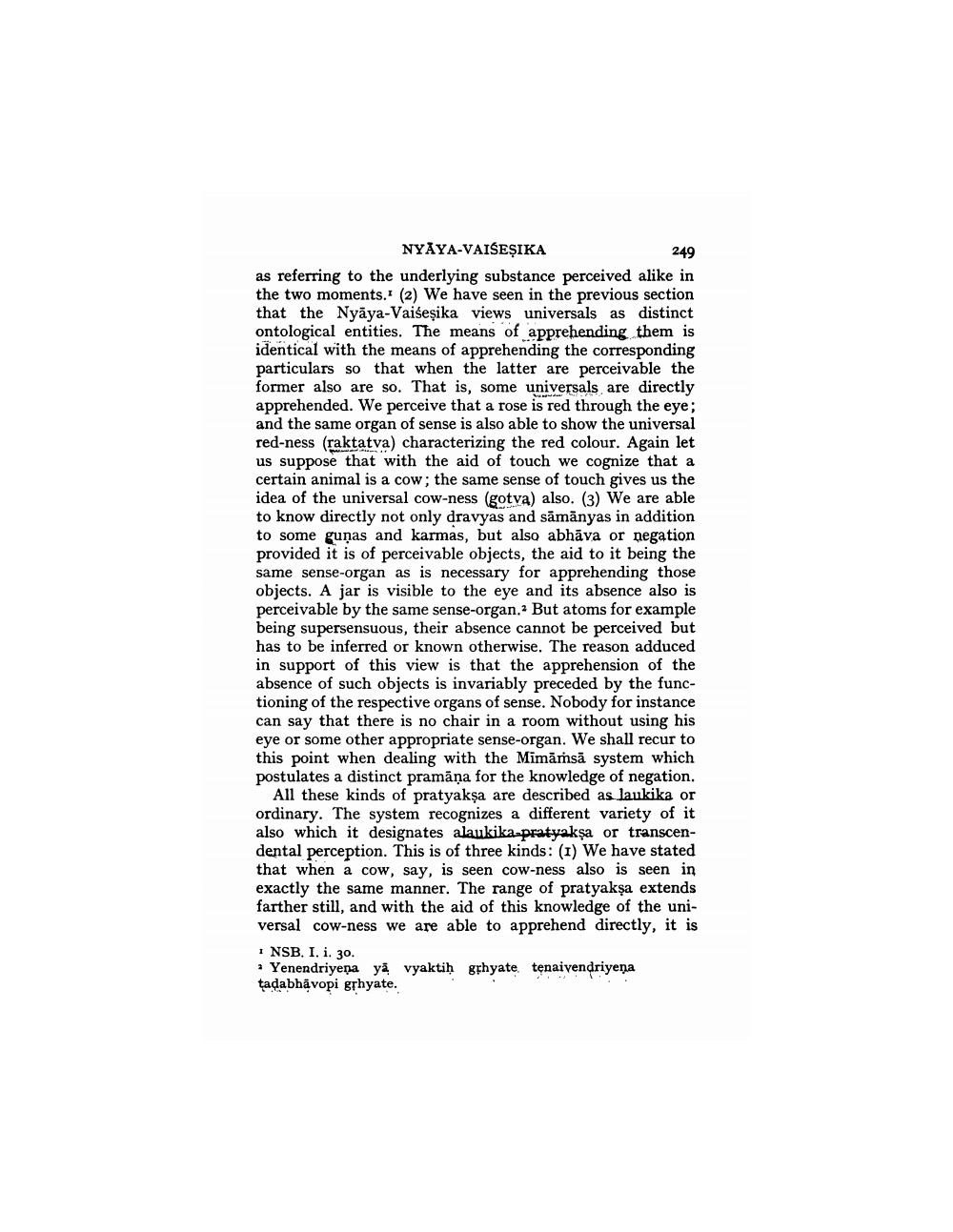________________
NYAYA-VAIŠEŞIKA
249
as referring to the underlying substance perceived alike in the two moments. (2) We have seen in the previous section that the Nyaya-Vaiśeşika views universals as distinct ontological entities. The means of apprehending them is identical with the means of apprehending the corresponding particulars so that when the latter are perceivable the former also are so. That is, some universals are directly apprehended. We perceive that a rose is red through the eye; and the same organ of sense is also able to show the universal red-ness (raktatva) characterizing the red colour. Again let us suppose that with the aid of touch we cognize that a certain animal is a cow; the same sense of touch gives us the idea of the universal cow-ness (gotva) also. (3) We are able to know directly not only dravyas and sāmānyas in addition to some gunas and karmas, but also abhāva or negation provided it is of perceivable objects, the aid to it being the same sense-organ as is necessary for apprehending those objects. A jar is visible to the eye and its absence also is perceivable by the same sense-organ. But atoms for example being supersensuous, their absence cannot be perceived but has to be inferred or known otherwise. The reason adduced in support of this view is that the apprehension of the absence of such objects is invariably preceded by the functioning of the respective organs of sense. Nobody for instance can say that there is no chair in a room without using his eye or some other appropriate sense-organ. We shall recur to this point when dealing with the Mimämsä system which postulates a distinct pramāņa for the knowledge of negation.
All these kinds of pratyakşa are described as laukika or ordinary. The system recognizes a different variety of it also which it designates alaukika-pratyakṣa or transcendental perception. This is of three kinds: (1) We have stated that when a cow, say, is seen cow-ness also is seen in exactly the same manner. The range of pratyakṣa extends farther still, and with the aid of this knowledge of the universal cow-ness we are able to apprehend directly, it is
1 NSB. I. i. 30.
Yenendriyena ya vyaktiḥ grhyate tenaivendriyena tadabhavopi grhyate.




